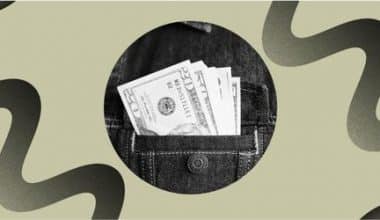When you refinance, you replace your current mortgage with a new one. To improve one’s interest rate and repayment terms, refinancing is common financial strategy. Instead of just getting a new mortgage and getting rid of the old one, both mortgages are paid off and then a new loan is issued. Borrowers with stellar credit ratings might benefit from refinancing by switching from a variable to a fixed-rate loan and perhaps lowering their monthly payments. Refinancing is problematic for borrowers with less-than-perfect credit or terrible credit, or who have amassed excessive debt. There is never a good time to try to make mortgage payments, regardless of the economy. Making mortgage payments may become more challenging than you anticipated due to rising interest rates and economic uncertainty. Refinancing a car, or home, how it works and its purpose will be discussed in this piece.
What Is Refinancing?
Refinancing is the method through which homeowners adjust the interest rate and/or terms of their current mortgage. In essence, refinancing is the process of modifying certain features of your mortgage. Also, refinancing is not the same as getting a second or supplementary mortgage, such as a home equity loan or line of credit.
There are many good reasons to consider refinancing your home, including the chance to lower your monthly payment, save thousands of dollars in interest over the life of your loan, pay off your mortgage faster, and access the equity in your house for any reason.
How a Refinance Works
When consumer confidence dips or interest rates rise, many opt to refinance their debt to take advantage of the new, more enticing terms. Refinancing is done for several reasons, the most common of which are to reduce the loan’s fixed interest rate and therefore monthly payments, to shorten or lengthen the loan term, or to transfer from a fixed-rate mortgage to an adjustable-rate mortgage (ARM) or the other way around.
Furthermore, when their credit improves, their financial goals change, or they desire to consolidate their loans into a single, lower-interest loan, borrowers may consider refinancing.
Most borrowers choose to re-finance because of changes in interest rates. Due to the cyclical nature of interest rate changes, many borrowers choose to refinance when rates are low. Interest rates for households and businesses can go up or down depending on national monetary policy, the business cycle, and market competitiveness. Both fixed-rate loans and revolving credit card rates might be affected by these variables. Debtors with variable interest rate products pay more interest when interest rates are increasing and less when rates are decreasing.
You must submit a new loan application to your existing lender or a new lender to refinance your loan. The next step in the refinancing process is to review the borrower’s or borrower’s business’s current credit terms and financial situation. Mortgage, vehicle, and education financing are just some of the most common types of consumer loans that get refinanced.
Commercial mortgage loans are another type of debt that a company may look to refinance. Also, if your credit has improved, your long-term financial goals have changed, or you just want to consolidate your debt into one low-interest loan, refinancing may be the best option.
Types of Refinancing
Homeowners can choose from a number of mortgage refinancing programs, but here are the most popular ones:
#1. Cash-Out Refinance
Although the terms of your mortgage will change, a cash-out refinancing still involves replacing your current loan with a new one. The catch is that you’ll borrow more than the amount your house is worth in order to cash out some of the equity.
If you’ve built up equity in your house, a cash-out refinance may be a viable choice. Most mortgage firms won’t let you cash out more than 80% of your house, so you’ll always have 20% equity.
If your home is worth $200,000 and you’ve paid down your initial mortgage by $100,000, you’d have $100,000 left over. This equates to $50,000 in equity or 10% of the home’s worth.
In order to retain 20% equity, you can borrow up to 30% of your home’s value ($60,000).To pay off the existing mortgage and cover the additional purchase price, you would need to borrow $160,000 ($60,000 in cash plus $100,000 on the home).
USDA mortgage refinancing is available for conventional, FHA, and VA loans, but not for cash-out refinancing. You can utilize the money from a USDA loan for anything you desire by refinancing it into a traditional mortgage.
#2. No-Closing-Cost Refinances
There could be thousands of dollars in closing expenses that you’re not ready to pay for when you refinance. As a rate-and-term refinance, a no-closing cost refinance allows you to switch terms and rates. But, there will be no large final payment.
Closing fees may be deferred, but you’ll still have to pay for them eventually. If you don’t pay, the lender will find another way to get money off of you. You can either add the money to your mortgage balance or pay a higher interest rate to cover closing fees.
#3. Convenient Refinancing
A mortgage streamline refinance allows you to skip the appraisal process altogether. You may not even have to provide evidence of your income or credit history or debt-to-income ratio to get approved.
If your home’s value has dropped but you still want to refinance, streamlining is an excellent option because the lower value won’t affect your loan’s approval or interest rate. Also, you won’t have to disclose your financial history, which can be a relief if your credit isn’t as stellar as you’d like it to be.
Government-backed house loans, such as FHA, VA, or USDA mortgages, are eligible for streamlined refinancing, but conventional mortgages are not. When you refinance a mortgage into another mortgage of the same sort, you are doing so. By way of illustration, you may switch from one FHA loan to another.
Mortgage refinances depend on the loan type, ability to qualify, and desired financial outcome.
#4. Consolidation Refinancing
A consolidation loan might be a good option for refinancing your debt in specific circumstances. Investors may combine if they can receive a lower-interest loan than their weighted average across credit products. To accomplish this form of refinancing, the consumer or business first obtains a new loan at a reduced interest rate, then uses that money to pay down their previous debts, resulting in a lower interest rate and a smaller monthly payment.
#5. Rate-And-Term Refinancing
In most cases, the term “normal refinance” refers to a transaction in which the interest rate and loan duration are changed. A new mortgage is taken out in place of the old one. After a refinance, you’ll likely get a new loan with a different duration and interest rate.
Anyone with a conventional, FHA, VA, or USDA mortgage can refinance their rate and term. There are minimum requirements for several types of mortgages, including credit score, debt-to-income ratio, and home equity.
One type of refinancing is the ability to switch from one FHA mortgage to another FHA mortgage with a different interest rate and/or loan duration. Maybe you might think it’s time to make the switch from an FHA loan to a conventional one.
Does Refinancing Mean You Get Money?
The specifics of your money transfer. You can get a large quantity of money at the closing of a cash-out to refinance a deal. Your current mortgage(s), along with any closing expenses and prepaid items (such as real estate taxes or homeowners insurance), will be paid off with the loan proceeds, and any residual monies will be disbursed to you.
Is It a Good Idea to Refinance a Loan?
If you need more time to pay off your loan or if interest rates have reduced, refinancing could be a suitable alternative. Refinancing to lower your interest rate can lower your personal loan payment.
What Are the Pros and Cons of Refinancing
Homeowners with an existing mortgage may be capable of refinancing into a new home loan in order to reduce their mortgage term, or interest rate, or tap into their home’s equity for other financial needs; however, there are potential negatives to this choice that homeowners should be aware of. Why? The risk of wasting time and money makes it unlikely that they will pursue this option.
Consider the pros and cons of refinancing if you’re considering a new loan.
Pros
Large savings may be possible through mortgage refinancing, but this will depend on the specifics of your circumstances and your aspirations. However, while a refinance can provide you with the following advantages, it may also involve the following disadvantages.
#1. You Could Be Able to Reduce Your Loan Term
Refinance into a shorter-term mortgage to pay off faster (for example, going from a 30-year loan to a 15-year). The faster you pay off the loan, the sooner you may start building equity in your property. Because of this, you will be able to enjoy the benefits of house ownership sooner, like saving money on interest and having more disposable income each month when you no longer have a mortgage payment to make.
#2. Predictability in Payments Is Possible
Refinancing from an ARM to a fixed-rate mortgage is an option for borrowers with an ARM. Your interest rate on an adjustable-rate loan will fluctuate with market conditions. That means your monthly payment amount is subject to the same fluctuations.
The interest rate on a fixed-rate loan does not change during the loan’s duration. Due to the consistency of both the principal and interest components, your monthly payments will be easier to budget for. It’s important to keep in mind that your escrow payment could change if your property taxes or insurance premiums change. Such reliability can facilitate cost estimation and budgeting.
#3. To Meet Certain Costs, You May Need to Cash in Some Equity
Cash-out refinancing allows you to borrow against the equity you have built up in your house, which can be helpful if you want to make changes to your property, pay down and consolidate your debts, or pay for things like debt consolidation. You’ll simply borrow more than you have to pay back and keep the difference.
#4. In the Long Run, You Could End up Paying Less for the Loan
Obviously, the interest you pay on a loan is proportional to the amount borrowed, so if you can reduce the amount of time it takes you to pay it off, you’ll save money. But if you don’t refinance the debt sooner, what happens then? Ultimately, it’s possible that you’ll spend less on mortgage interest.
To save money each month, see if you can refinance when interest rates are low. Given that you will continue to pay interest until the loan is paid in full, this will reduce the overall interest you pay.
Cons of Refinancing
You should consider whether or not refinancing is the best option for you before making any final decisions. These are several cons to refinancing that you should think about before applying.
#1. It’s Possible That Your Regular Payment Will Rise
Reducing the term of your mortgage from 30 years to 15 years would likely result in a higher monthly payment.
For instance, If you borrow $200,000 over 30 years, your interest rate will be 4%. Your payment is currently $954 per month (excluding escrow). You decide to refinance your $200,000 15-year mortgage at the same interest rate. Your new monthly payment amount is $1,479.
It is possible that your payment amount will increase after refinancing, even if you do so at a cheaper interest rate. To illustrate, let’s say you’re considering refinancing your $200,000 mortgage into a 15-year loan at 3.5% interest. Your monthly payment will be $1,429.
#2. It’s Possible That the Cost Savings Won’t Be Enough to Justify the Work
As you can see from the preceding illustration, the cost savings from a refinance may not be substantial enough to warrant the time and effort required to complete the refinancing procedure. You’ll still need to put in some work to secure a new loan, provide financial paperwork, and have an appraisal, even if the procedure is streamlined and easy.
#3. Your Home’s Equity May Decrease as a Result
Borrowing against the value of your property is possible through a cash-out to refinance. Basically, you’re reducing the amount of equity you have in your property by utilizing it. A cash-out refinance of $20,000 would result in $30,000 in equity when a home with $50,000 in equity was tapped for $20,000.
Refinancing a Car
Have you considered ways to reduce the cost of your car loan? Your monthly automobile payment and the interest you pay could be reduced by refinancing your car loan. With that surplus, you’ll have more options for retirement planning, property enhancements, or debt reduction.
It’s possible to refinance a car loan by taking out a new loan to cover the balance of the old one. Depending on the terms, it can help you lower interest rates, decrease monthly payments, and speed up the debt repayment process.
How to Refinance a Car Loan
Applying for a car loan refinancing involves the same stages as applying for a new auto loan, plus a few more. Consider your financial situation and loan paperwork to help you locate a suitable lender.
#1. Figure Out if Getting a New Loan Is a Good Idea
If you are having trouble making payments or can get a lower interest rate by refinancing, these are the two most common motivations.
The first is typical if you got your car loan while rates were high or your credit was poor. You can save a lot of money over the course of your loan’s lifetime if your credit score has increased since you originally took out the loan.
On the other side, you can be refinancing your car loan to a longer term if you find that your monthly payment is too high. Your monthly payment will be lower, but the total amount you pay in interest is likely to be higher if you extend the length of your loan’s repayment period.
#2. Assess the Status of Your Present Loan
When it comes to refinancing, most banks have a set minimum loan amount. To see if you are eligible, you will need to know your payback amount.
You should know how much interest you’ve paid so far, how much your monthly payment is, and how much the loan will cost in total if you pay it off on time. Compile this data so that you may evaluate your present loan against the offers you will receive in the next steps.
#3. Check Your Credit Report
When you apply for refinancing, a primary consideration for lenders will be your credit score and history. Your credit may now be better because you have made responsible financial choices since then, such as reducing your credit card debt and always paying on time. Your credit score will improve the lenders’ perception of you, maybe leading to lower interest rates.
Before applying for anything, check your credit rating. This will point you in the direction of reputable lending institutions and give you an idea of what interest rates you might be offered. If you shop around, you might be able to find a lender who is willing to work with you despite your less-than-perfect credit score. Also, read WHEN SHOULD YOU REFINANCE YOUR CAR? Is It Ever a Good Idea to Refinance Your Car?
#4. Figure Out How Much Your Car Is Worth
While determining whether or not to refinance, interest rates aren’t the only thing to think about. You should also find out how much money your car is worth. Car valuation guides like Kelley Blue Book and Edmunds make it simple.
Refinancing could save you money and keep you from falling upside-down on your loan if your car is relatively new, has low miles, and a substantial debt that will still take years to pay off. In this case, you might be out of luck if the value is lower than the amount you owe.
Refinancing is less attractive if you’ve nearly paid off your car because interest only accounts for a tiny percentage of your remaining payments.
What Is Negative About Refinancing?
Cost. The fact that it requires financial outlay is without question the most significant drawback that comes with refinancing. When you are getting a new mortgage to pay off the previous one, the majority of the closing costs will be the same as they were when you first bought the house. These charges will include the fees for the origination of the loan, the title insurance, the application fees, and the closing fees.
What Is Refinancing a Home
By refinancing, a borrower may be able to lower their monthly mortgage payment and/or interest rate.
Refinancing a home loan entails switching to a new loan with more advantageous terms. Your decision to refinance should be based on how much money you can save. Potential savings can be estimated by considering factors such as interest rates, closing expenses, and the expected length of time in the home.
What Are the Benefits of Refinancing a Home?
The advantages of refinancing a home might vary widely depending on the homeowner’s objectives, requirements, and current financial standing. Many people choose to refinance because of the many financial and practical advantages it offers. Some of what refinancing can improve upon are as follows.
#1. A Reduction in Your Mortgage Rate
Refinancing increases when rates fall. Home refinancing for a lower rate could save you thousands over the life of your loan, depending on the length of your loan and the amount of time you plan to live in the home. If your credit score has increased, though, you don’t have to wait for rates to go down. If your credit has improved to the point that you qualify for a cheaper interest rate through refinancing, you should definitely take advantage of that.
#2. Less Stressful Due to More Affordable Payments
Refinancing your home to a longer term can reduce your monthly payment without sacrificing the interest rate you lock in at closing, leaving you with more money in your budget each month to put toward other obligations. You would be spending more money throughout the course of the loan if you made smaller monthly payments toward the principal. It’s up to you to do the math based on your unique circumstances and decide what’s best. In addition, the best lenders will take the time to explain the many outcomes to their borrowers.
#3. Get a Loan
To finance home improvements or other large purchases like tuition or medical bills, take out a loan against the value you’ve built up in your house’s equity. The funds are yours to spend as you like, and the amount you withdraw will be included in the new loan’s principal. Depending on your equity and the interest rate, this can be a cheaper method to borrow than a personal loan or credit line.
What Is the Purpose of Refinancing a Home
The primary advantage of refinancing a home is the possibility of a cheaper interest rate. Getting a reduced interest rate can save you a ton of money over the life of your mortgage, whether it’s because your credit has improved considerably since you first obtained it or because market conditions have shifted.
Conclusion
Refinancing is a fantastic strategy to leverage your home’s equity when the moment is perfect. Long-term cost savings can be achieved by modifying the loan’s term, switching to a more favorable interest rate, or taking out a different kind of loan. You can take the equity in your property and use it in whatever you like.
Ideally, the savings you make by refinancing will outweigh the interest you’ll pay. You shouldn’t be any further away from realizing your aspirations if doing so would seriously compromise your financial stability or increase the likelihood that you won’t be able to repay your debt in full.
Refinancing FAQs
What does it cost to refinance?
A refinance’s final cost is determined by a number of factors, including your lender and the value of your house. A typical fee ranges from two percent to 6% of the loan amount. With the abolition of the adverse market refinances fee, refinancing could spare you the cost of these charges.
Can I take equity out of my house without refinancing?
The sale-leaseback arrangement is a great alternative to refinancing when you need to access your home’s equity. The present homeowner keeps all of the equity that has been built up in the home throughout a sale-leaseback transaction.
Similar Articles
- Important Things to Know Before Refinancing Credit Card Debts (Refinansiering Av Kredittkort)
- HOW MANY TIMES CAN YOU REFINANCE YOUR HOME: Updated
- HOW SOON CAN YOU REFINANCE A MORTGAGE IN 2023?
- RATE AND TERM OPTION: Explained
- LOAN AGREEMENT: Meaning, How to Write & Template






